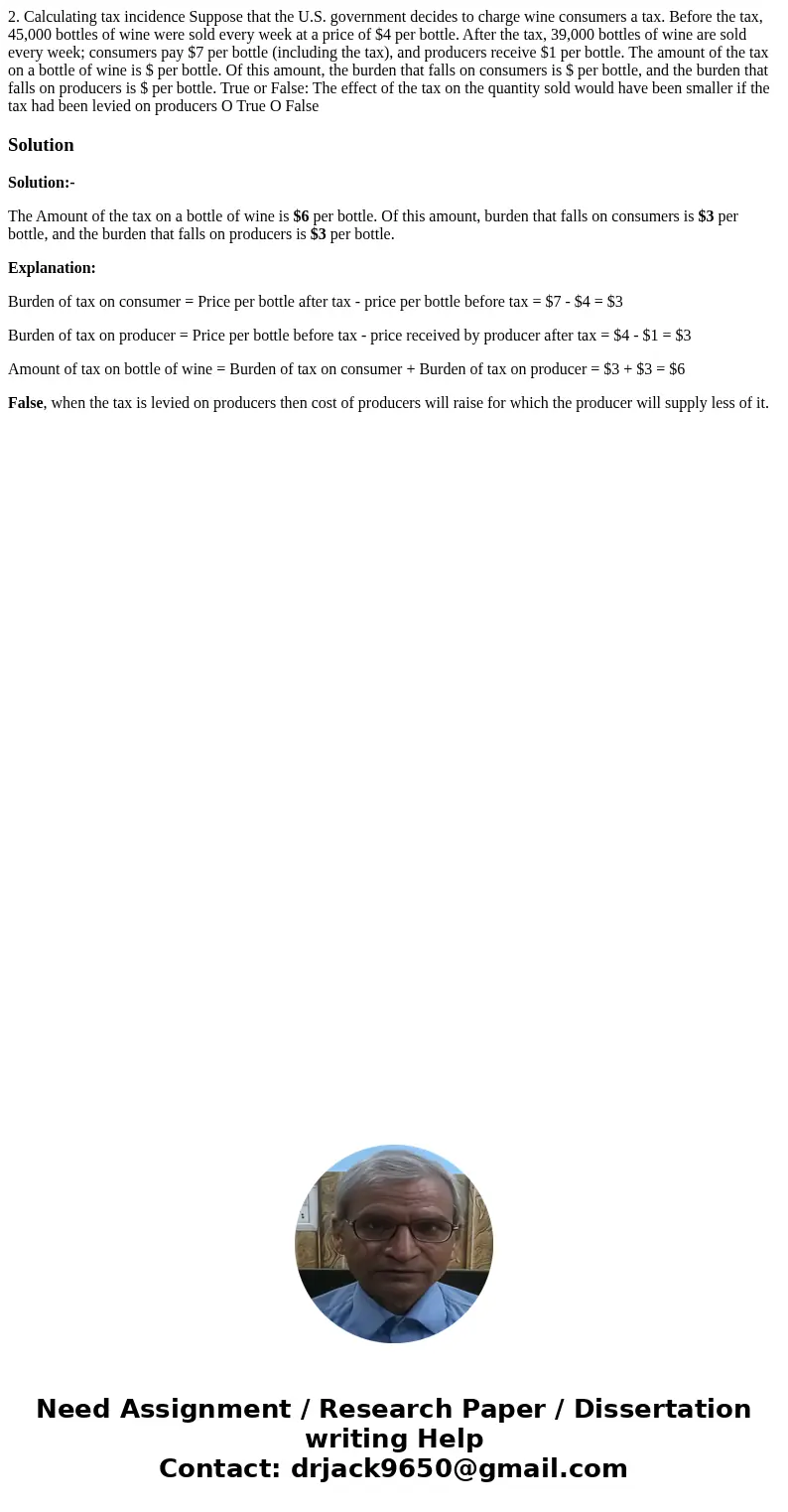2 Calculating tax incidence Suppose that the US government d
2. Calculating tax incidence Suppose that the U.S. government decides to charge wine consumers a tax. Before the tax, 45,000 bottles of wine were sold every week at a price of $4 per bottle. After the tax, 39,000 bottles of wine are sold every week; consumers pay $7 per bottle (including the tax), and producers receive $1 per bottle. The amount of the tax on a bottle of wine is $ per bottle. Of this amount, the burden that falls on consumers is $ per bottle, and the burden that falls on producers is $ per bottle. True or False: The effect of the tax on the quantity sold would have been smaller if the tax had been levied on producers O True O False 
Solution
Solution:-
The Amount of the tax on a bottle of wine is $6 per bottle. Of this amount, burden that falls on consumers is $3 per bottle, and the burden that falls on producers is $3 per bottle.
Explanation:
Burden of tax on consumer = Price per bottle after tax - price per bottle before tax = $7 - $4 = $3
Burden of tax on producer = Price per bottle before tax - price received by producer after tax = $4 - $1 = $3
Amount of tax on bottle of wine = Burden of tax on consumer + Burden of tax on producer = $3 + $3 = $6
False, when the tax is levied on producers then cost of producers will raise for which the producer will supply less of it.

 Homework Sourse
Homework Sourse